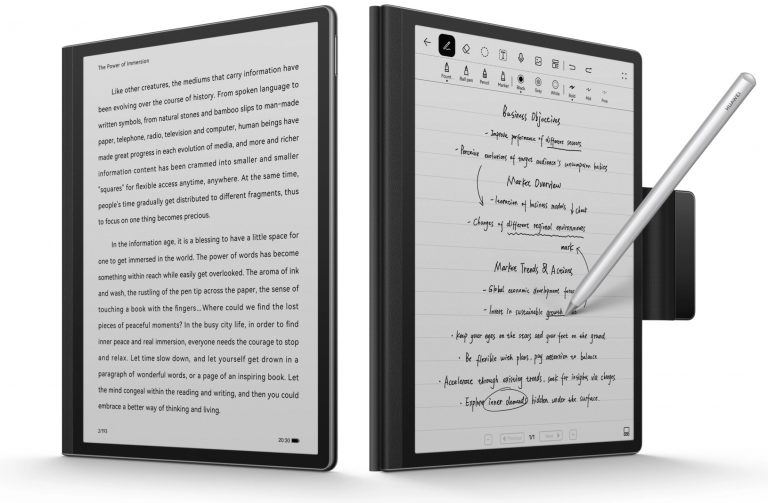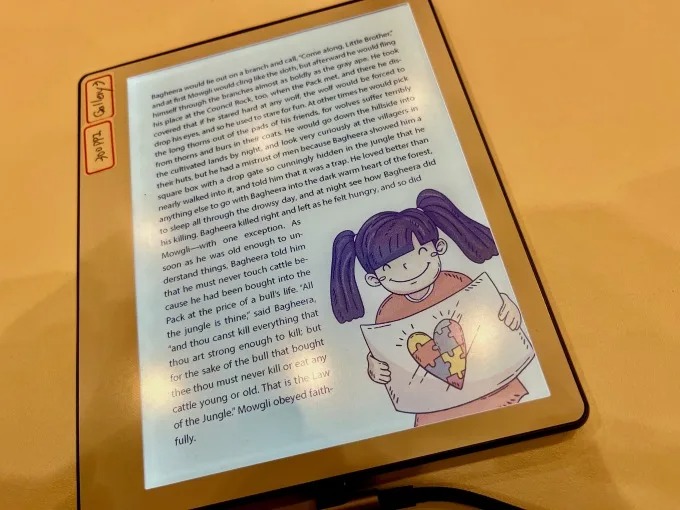Nothing quite like turning the pages of an actual printed magazine yet, but the latest advances in E Ink color technology are, at least to my eyes, intriguingly close.
You’ve heard it all before:
Staring at a screen for the rest of my life has strained my eyes, and I’ve fallen through a rabbit hole full of lifehack solutions to heal my fatigue. Some of the tricks I’ve learned over the years have helped.

I still spend way more time than I should be staring at the shiny display.
I don’t want to spend a lot of money on videos and games, but when it comes to reading, I usually ignore the latest technology and look instead to his Kindle Oasis from 2016 or old-school books. My hands can tell the difference between the two, but I don’t think my eyes can tell when I’m lost in a story. Reading both paper and e-paper makes me feel lighter.
It looks like the light is reflected from the side. Or is it because you know you don’t get bombarded with ads and notifications all that often? I like simplicity, and E Ink reminded me of that when I walked into their tiny conference room in Las Vegas last week.
For CES 2023, E Ink set up shop at the Venetian. Inside its improvised showroom, the MIT spinoff stuffed its newest technology, including bits of its bizarre BMW wrap and its most recent Gallery 3 colour displays.
Devices like the PocketBook Viva are the first of the latter technology to enter the market recently. And let me tell you, compared to the washed-out colours in E Ink’s Kaleido colour screens, which launched only two years ago, these displays are downright bright. Compared to Kaleido’s 4,000 colours, Gallery 3’s CMYK displays can produce 50,000 colours at 300 DPI, the manufacturer claims.
In an interview with TechCrunch, U.S. business head Timothy O’Malley admitted the obvious: “We aren’t ever going to be the finest movie-showing screen.” However, E Ink’s objectives still go well beyond what the iPad can do. According to O’Malley of E Ink, the company eventually wants to provide a magazine reading experience that would satisfy even the pickiest of publishers.
The 22-year firm veteran said, “Fashion magazines in particular have strict criteria on colour [and] that’s a fantastic goal for us. “I do think we will make it, and the technology inherently supports it.”
We’ll work on the material reaction and the controls, and we’ll increase the saturation to that, said O’Malley. Reaching that goal might also appeal to readers of children’s books and comic book lovers.
E Ink’s Gallery colour technology is now most effective when used in signage, where the business may trade refresh rate for clarity. In contrast, handheld readers, where you don’t want to have to wait forever for the next page to load, nonetheless have muted colours when compared to retina displays. On a Gallery 3 sample, huge images slowed and awkwardly flashed as I swiped. However, the same prototype appeared to be consumer-ready when it combined small colour images with black-on-white text.
E Ink’s Gallery 3 stats show the current compromise. The company announced in December that black-and-white refresh times will be 350ms, and color speeds will go from 500ms (which E Ink calls “fast color mode”) to 1500ms (“best color”). said range. E Ink allows manufacturers to choose how to balance speed and clarity, so your proverbial mileage may vary.
Brands like PocketBook, Bigme, and BOOX seem to have already embraced Gallery 3, but no word yet on whether Amazon is ready to throw some serious weight into its color e-reader. . Amazon could help justify this technology, but crucially, the retail giant recently ditched magazine and newspaper subscriptions for the black-and-white Kindle amid significant cost savings. am. When I asked O’Malley what a full-color Kindle raid was, the CEO quickly turned away. “This is his two-step dance: we have our part and each customer has their part,” he said.
